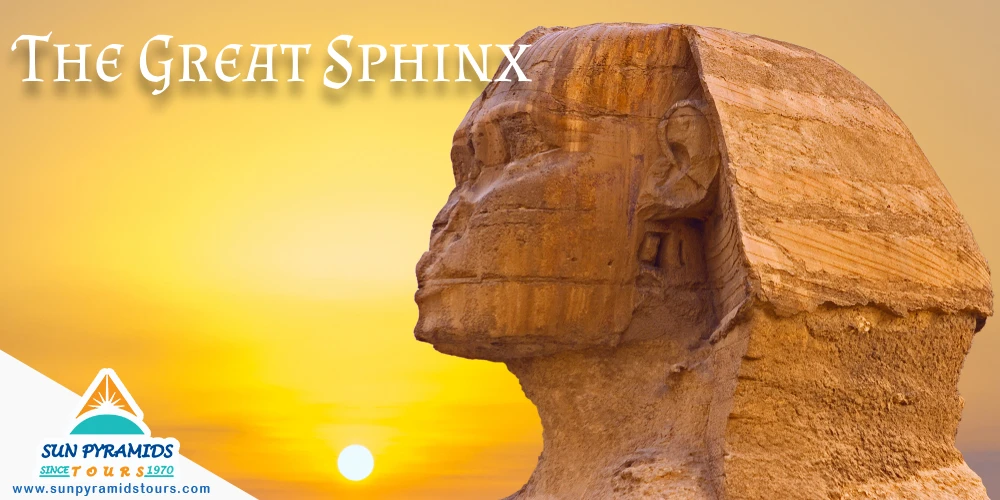Table of Content
The Great Sphinx Facts
The Mysterious Nose of the Great Sphinx
The Dream Stela of the Sphinx
The Sphinx Age
Evolution of the Sphinx
Erosion Effects on the Sphinx
Secret Tunnels Under the Great Sphinx
Names of the Great Sphinx
Theories About the Sphinx
The Great Sphinx of Giza
The Great Sphinx of Giza, with a lion's body and a pharaoh's head, stands as one of Egypt's most iconic landmarks. Carved from limestone, this colossal statue measures 73 meters in length and 20 meters in height. It guards the Giza Plateau, symbolizing strength and wisdom. The Great Sphinx is considered to be the embodiment of antiquity and mystery.
This article's main goal is to offer every traveler all the facts and information about the Great Sphinx. This article was written by a team of tour operators, tour guides, knowledgeable historians, and travel consultants who know everything about the Great Sphinx.
It has illuminated the imagination of many poets, travelers, adventurers, and scientists over the millennia, and even today, its origin remains an enigma. Great tales of mystery and wonder have been told about this incredible statue that showcased a whole new aspect of ancient Egyptian mythology, architecture, and artistic expression.
The Great Sphinx Facts
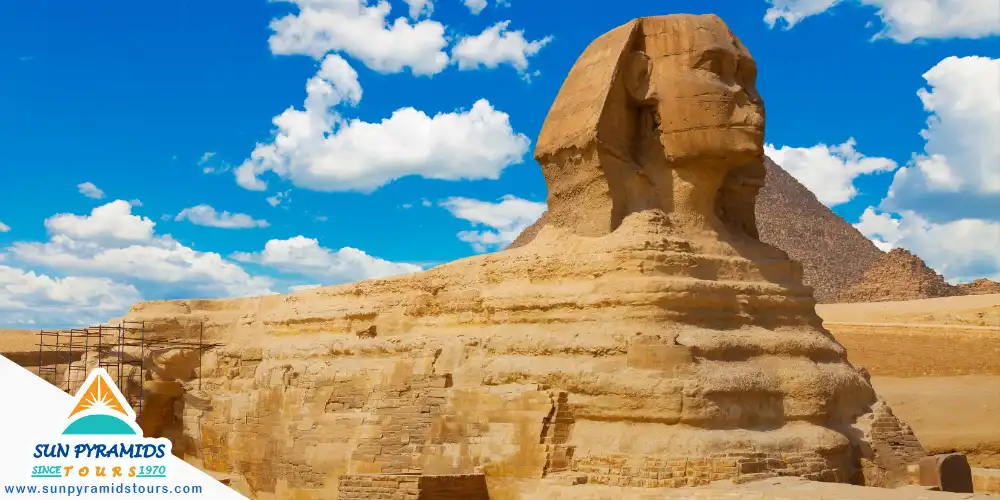
Symbolism and Construction
The Sphinx embodies Ra-Horakhty, a form of the mighty sun god, symbolizing royal strength and protection. This monumental statue, carved from a single block of limestone, has a lion's body and a human head adorned with a royal headdress, representing both power and wisdom. It measures 73 meters in length (240 feet), 19 meters in width (62 feet), and 20 meters in height (66 feet).
The Necropolis of Ancient Memphis
The Sphinx was part of the necropolis of ancient Memphis, the center of power for the pharaohs. It stands near the three Great Pyramids of Giza: Khufu (Cheops), Khafre (Chephren), and Menkaura (Mycerinus). Between its front paws lies a small temple with inscribed steles dedicated to the sun god Ra. Among these is the Dream Stela, placed by Pharaoh Tuthmosis IV in 1400 BC, commemorating a dream in which the Sphinx spoke to him.
Construction and Purpose
Traditionally, the statue is believed to have been constructed during the 4th dynasty of Egypt's Old Kingdom, under Pharaoh Khafre's reign (2558 – 2532 BC). However, this remains a topic of debate. Sphinx statues were considered powerful guardians of cemeteries, explaining their placement in locations such as the Giza Plateau and the Karnak temple complex.
Depictions in the New Kingdom and Beyond
In the 12th dynasty of the New Kingdom, some prominent queens and princesses were depicted as Sphinxes, including Queen Nefertiti and Queen Hatshepsut, whose statues can be found at Karnak and her mortuary temple, respectively. During the Greco-Roman period, Egyptian Sphinxes were transported to Europe, where many still remain today.
The Mysterious Nose of the Great Sphinx
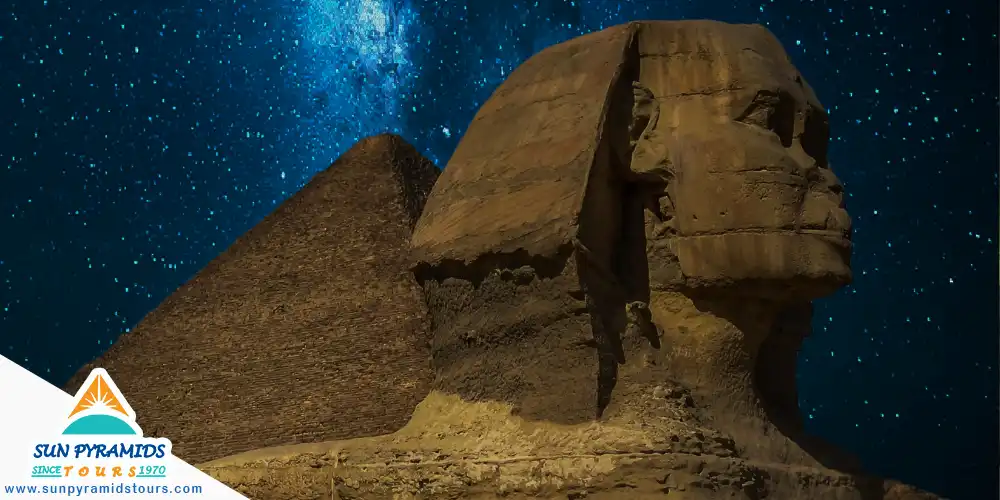
The missing nose of the Great Sphinx remains one of its most intriguing mysteries. Various theories attempt to explain this phenomenon. Some believe that the nose was destroyed during the Arab invasion in the 7th century, while others suggest it was the work of a Muslim cleric in the 14th century. Another popular theory is that it was damaged by Napoleon's troops between 1798-1801 CE, but this was debunked by an earlier drawing by French artist Frederic Luis Norden in 1737, which shows the Sphinx already without a nose.
The nose could also have been a target for Turkish troops, the Mamluks, or British soldiers. Despite these theories, the true cause remains unknown, making the mysterious nose of the Great Sphinx an enduring enigma. Additionally, the Sphinx once had a beard, later added and now displayed at the British Museum. The statue was originally painted with red, yellow, and blue pigments, resembling a character from a comic book.
Discover the mysteries and marvels of the Great Sphinx with Sun Pyramids Tours. Our expert guides will lead you through the history and legends of this iconic landmark. Don't miss the chance to stand in the shadow of the Sphinx and unravel its secrets. Book your tour today through this itinerary and embark on an unforgettable journey with Sun Pyramids Tours.
The Dream Stela of the Sphinx
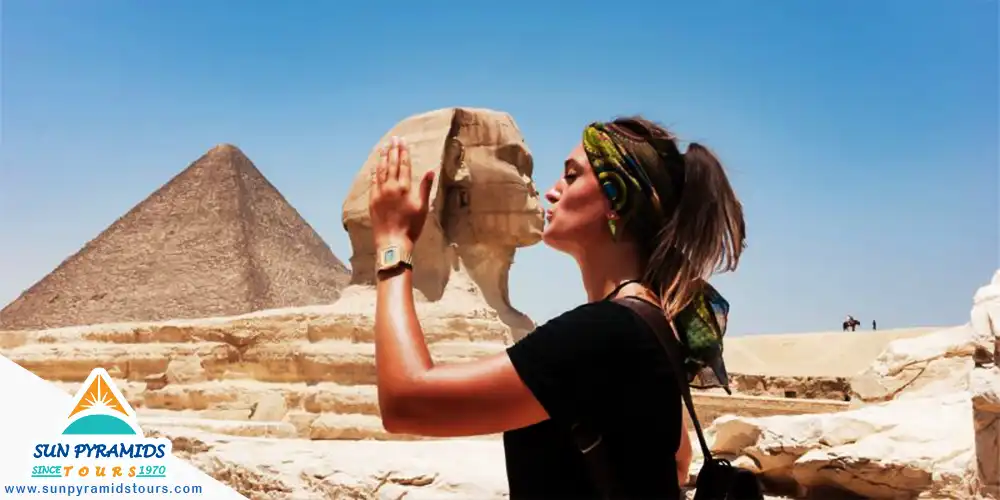
The Dream Stela of the Sphinx was erected during the New Kingdom by Pharaoh Thutmose IV in 1400 BCE. This granite stela was placed between the front paws of the Sphinx following an extraordinary event. Thutmose IV, while hunting, fell asleep in the shade of the Sphinx.
In his dream, the Sphinx came to life, choking in the sand that had engulfed it, and promised Thutmose IV that if he removed the sand, he would be granted the kingship of both Upper and Lower Egypt. This dream and the subsequent erection of the stela highlight the profound significance of the Sphinx in ancient Egyptian culture.
The Dream Stela of the Sphinx serves both as a historical record and a testament to the divine right to rule. The inscription on the stela captures this divine interaction and Thutmose IV's subsequent actions to honor the Sphinx, further embedding its legendary status in Egyptian history.
The Sphinx Age
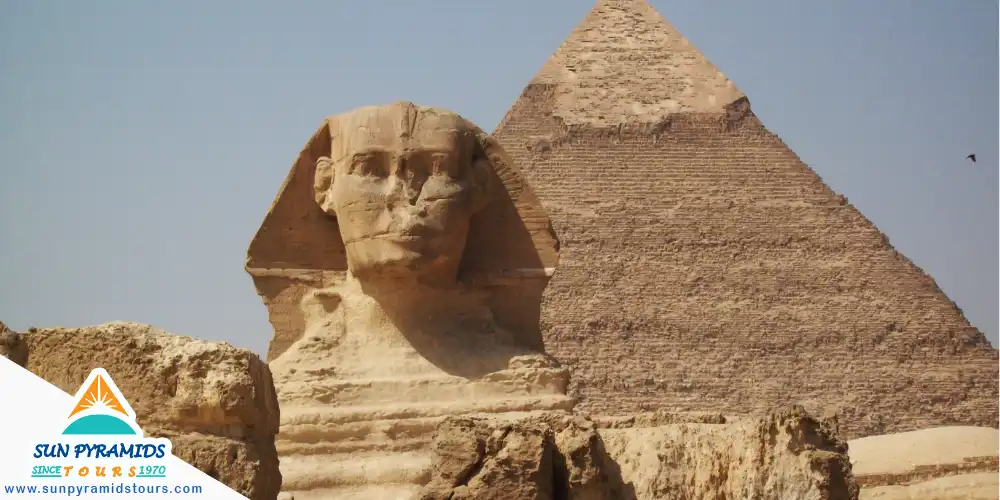
The age of the Great Sphinx has sparked considerable debate among scholars. Mainstream Egyptology began its construction around 2500 BCE during the reign of Pharaoh Khafre, aligning it geographically with the Khafre Pyramid.
The Sphinx, with its lion's body and human head, is believed by some to symbolize the constellation of Leo. Robert Bauval and Graham Hancock's theory suggests the construction began around 10,500 BCE, as they propose the Sphinx's design and the Giza pyramids complex align with the Orion constellation and the Milky Way. This alignment, they argue, matches the astrological age of Leo, which occurred between 10,970 BCE and 8810 BCE, implying the Sphinx is much older than traditionally believed. Geological studies of erosion patterns further support these alternative hypotheses about its true antiquity.
Additionally, some scholars suggest the Sphinx's head was re-carved several times after the Old Kingdom (2575 BCE - 2150 BCE) as a means of repair, potentially altering its original form, which might have depicted a ram or a hawk.
Explore the mysteries and grandeur of the Great Sphinx with Sun Pyramids Tours. Our expert guides will lead you through this ancient marvel and its fascinating history. Book your Giza pyramid complex tour today to uncover the secrets of the Sphinx and experience the rich heritage of Egypt.
Evolution of the Sphinx
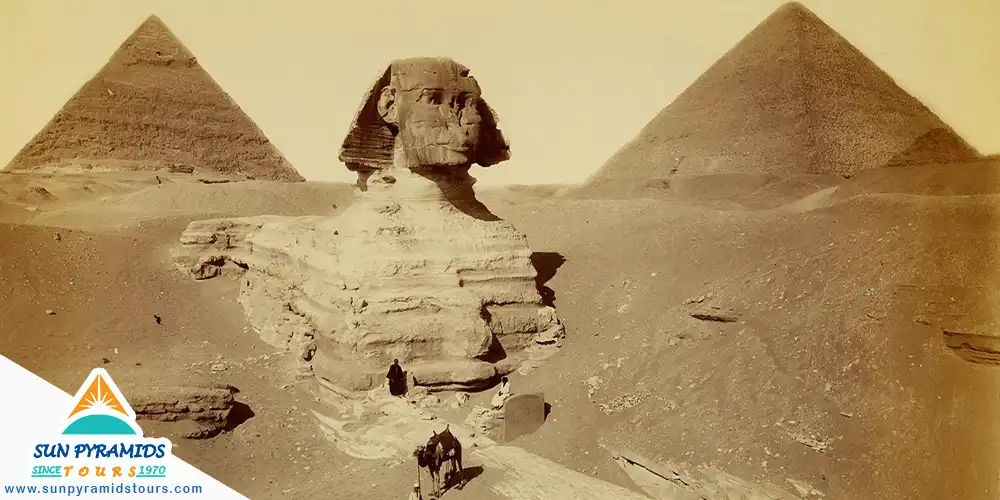
Over the millennia, the Sphinx has undergone numerous transformations and restoration efforts to combat erosion and preserve its structure. Initially, it was adorned with bright colors and possibly a royal headdress. Throughout different Egyptian dynasties, its representation evolved significantly.
During the Old Kingdom, sphinx statues typically featured a human head with a false royal beard and the nemes headdress, sitting atop the body of a lion. The Sphinx we see today is a prime example of this style, attributed to Pharaoh Khafre. However, in the Middle Kingdom, the portrayal of sphinxes shifted. They began to symbolize the king directly, often depicted with a human head surrounded by a lion's mane. Pharaoh Amenemhat III was the first to represent himself in this manner during the second half of the 12th dynasty.
In the New Kingdom, the artistic depiction of sphinxes continued to evolve. The statues retained the Middle Kingdom traits but incorporated additional elements. One notable change was transforming the forelegs of the reclining lion into human arms holding cult objects. This style first appeared with King Amenhotep III, showcasing the dynamic and adaptive nature of Egyptian art.
Preservation and Resilience of the Sphinx
Over time, changes in climate and human intervention have altered the Sphinx's appearance significantly. Despite these challenges, the Sphinx remains a testament to the ingenuity and creativity of ancient Egyptian civilization. The ongoing efforts to restore and preserve this iconic monument highlight its enduring significance.

Erosion Effects on the Sphinx
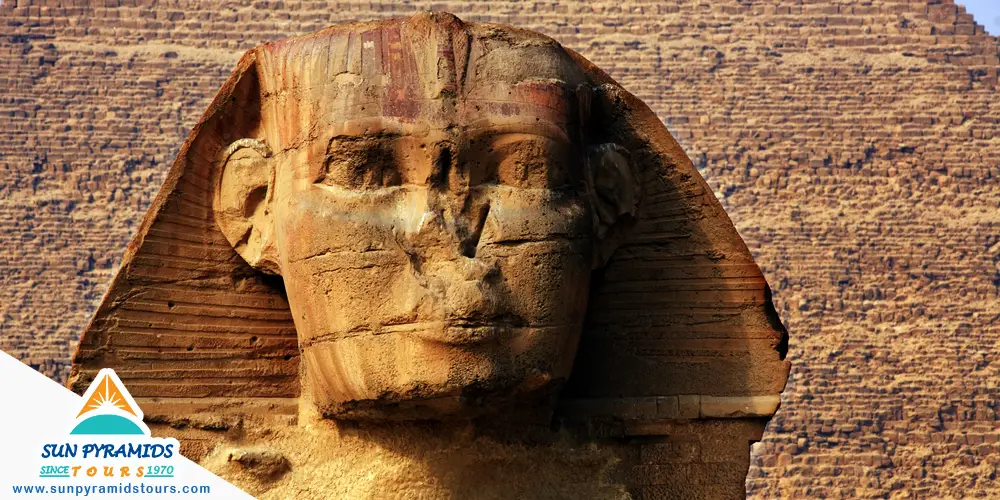
Decay has significantly impacted the Sphinx, with wind, sand, and water wearing away its limestone surface over millennia. One notable theory, the water erosion theory, suggests that signs of weathering were observed due to heavy rainfall at the end of the ice age between 7,000 BC and 5,000 BC, implying the Sphinx might be older than traditionally believed.
This theory posits that the Sphinx was constructed when Egypt was a dry and barren land. Restoration projects have been ongoing since ancient times, aiming to stabilize and protect this majestic monument from further degradation. The sand that once covered the Sphinx acted as a protective shield before it was exposed to natural erosion, highlighting the importance of ongoing conservation efforts.
Secret Tunnels Under the Great Sphinx
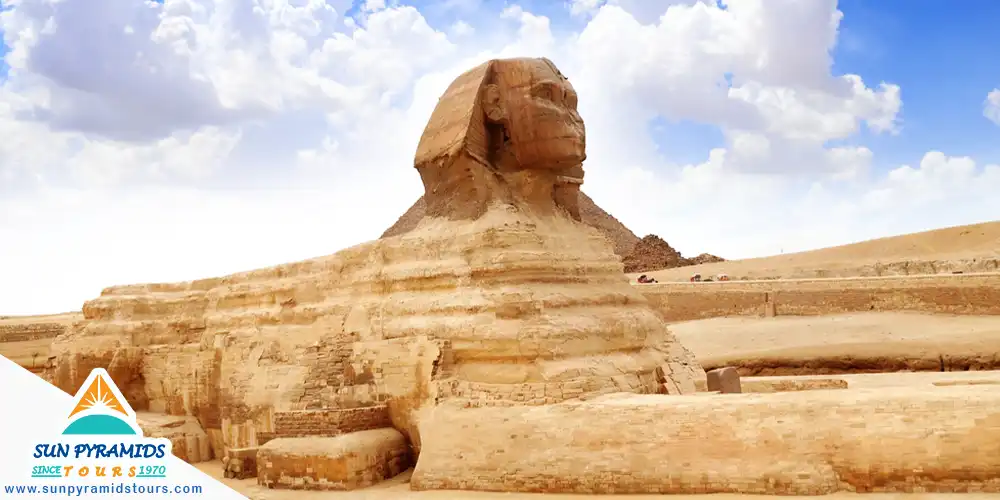
Legends and modern explorations suggest the existence of secret tunnels beneath the Great Sphinx. Some believe these tunnels connect to the pyramids or hold hidden chambers. Despite numerous investigations, the full extent and purpose of these tunnels remain a mystery.
Researchers from Boston, Florida State University, and Waseda University in Japan have discovered several voids and anomalies around the monument. Two series of cavities, tunnels, and pathways contemporary with the Great Sphinx may be natural features of the area. Using seismographs, a team of researchers found evidence of a hollow 25 feet below its paws and sides, confirming the legends of hidden chambers and tunnels beneath the Sphinx.
Discover the mysteries and marvels of the Great Sphinx with our detailed tours. Book your adventure now with Sun Pyramids Tours to explore this iconic monument and its hidden secrets. Sun Pyramids Tour Itinerary
Names of the Great Sphinx
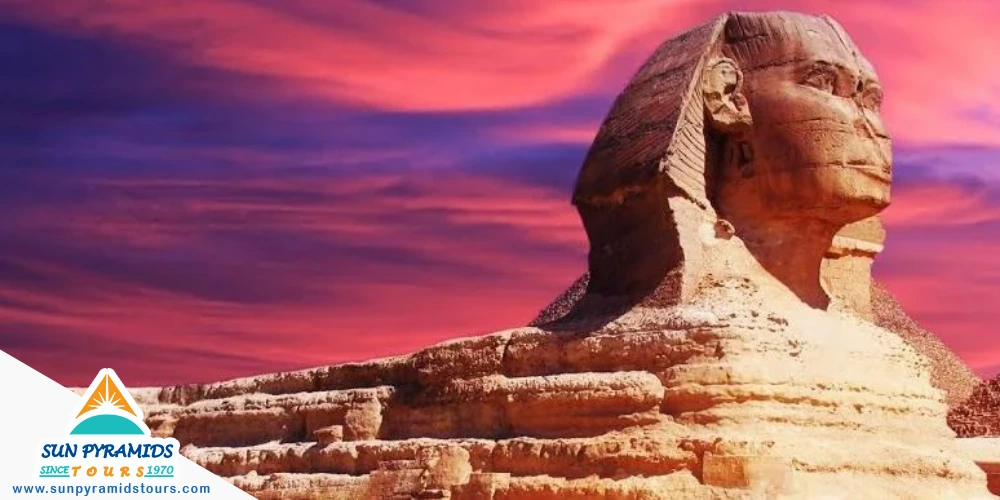
The Great Sphinx has been known by various names throughout history. In ancient Egypt's New Kingdom (1570 – 1050 BC), it was called 'Hor-em-Akhet', meaning 'Horus of the Horizon', and was heavily worshipped by the public, especially during the reign of Thutmose IV.
During the Greco-Roman period, it was named 'Sphinx' due to its resemblance to a Greek mythological beast with a lion's body, a woman's head, and the wings of an eagle. In the 4th century of the Coptic era, it was known as 'Bel-Hit', meaning 'The Guardian'.
Today, it is referred to as 'Abu Al-Haw, which means 'The Father of Terror'. The term 'Sphinx' is derived from the Greek word, while the ancient Egyptian name 'Ssp Ankh' translates to 'Living Image'. The design of the Sphinx is a remarkable blend of physical and mental power, with the lion's body symbolizing strength and the human head representing intelligence, signifying the dominance of the mind over brute force.
 Theories About the Sphinx
Theories About the Sphinx
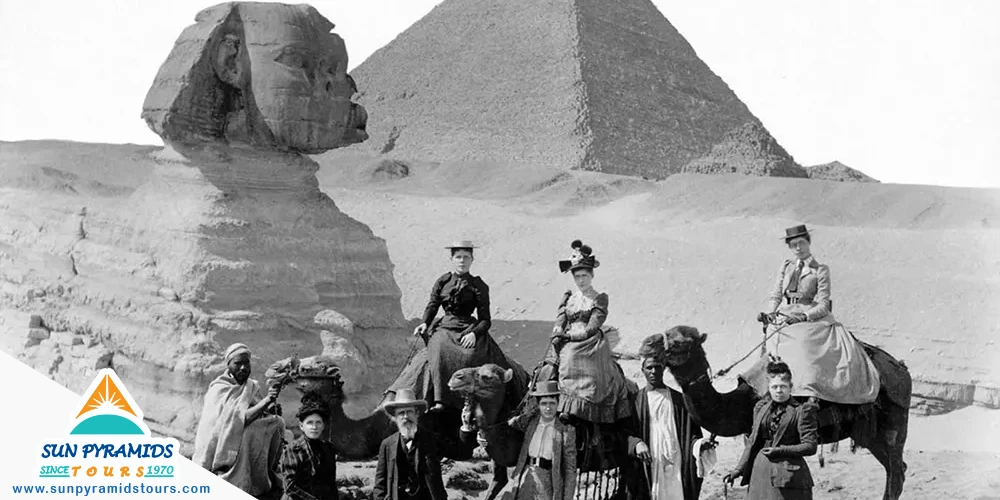
Over the years, numerous theories have emerged regarding the Great Sphinx, raising questions about its construction, purpose, and hidden secrets. With documentation from the Old Kingdom, the statue's origin remains clear, leading to a mix of scholarly debates and fringe theories. Some archaeologists suggest it served as an astronomical marker, aligning with celestial bodies.
Others speculate about its role as a repository of hidden knowledge or ancient secrets. The identity of its builders is also contested, with some fringe theories proposing that the Annunaki, deities from ancient Sumerian, Akkadian, Assyrian, and Babylonian civilizations, were responsible for its construction.
Additionally, imaginative theories liken the alignment of the Sphinx and the pyramids to pyramid-like structures on Mars or propose that Giza served as a landing strip for ancient spacecraft. These intriguing theories continue to fuel research and interest in this ancient wonder.
 Why do I book with Sun Pyramids Tours?
Why do I book with Sun Pyramids Tours?
1) Expertise and Experience: Sun Pyramids Tours has a wealth of 53 years of experience in the travel and tourism industry.
2) Customized Itineraries: Sun Pyramids Tours offers tailored itineraries to suit your preferences. Whether you're interested in historical sites, cultural immersion, or adventure activities, we can design a tour that matches your interests.
3) Local Connections and Insider Access: Sun Pyramids Tours can provide you with unique opportunities and insider access to attractions and experiences that may not be easily accessible to independent travelers.
4) Hassle-Free Planning: Sun Pyramids Tours can take the stress out of planning your trip. We handle all the logistics, including accommodations, transportation, and guided tours, at competitive prices… Relax and enjoy your vacation without worrying about the details.
5) Customer Satisfaction: Sun Pyramids Tours prides itself on providing excellent customer service and ensuring customer satisfaction. They strive to meet and exceed your expectations, making your trip enjoyable and memorable. Add trip advisor reviews, Facebook page reviews, etc.
6) Safety and Security: Sun Pyramids Tours prioritizes the safety and security of their guests. We work with trusted partners, adhere to safety guidelines, and provide support throughout your journey to ensure a safe and comfortable travel experience.
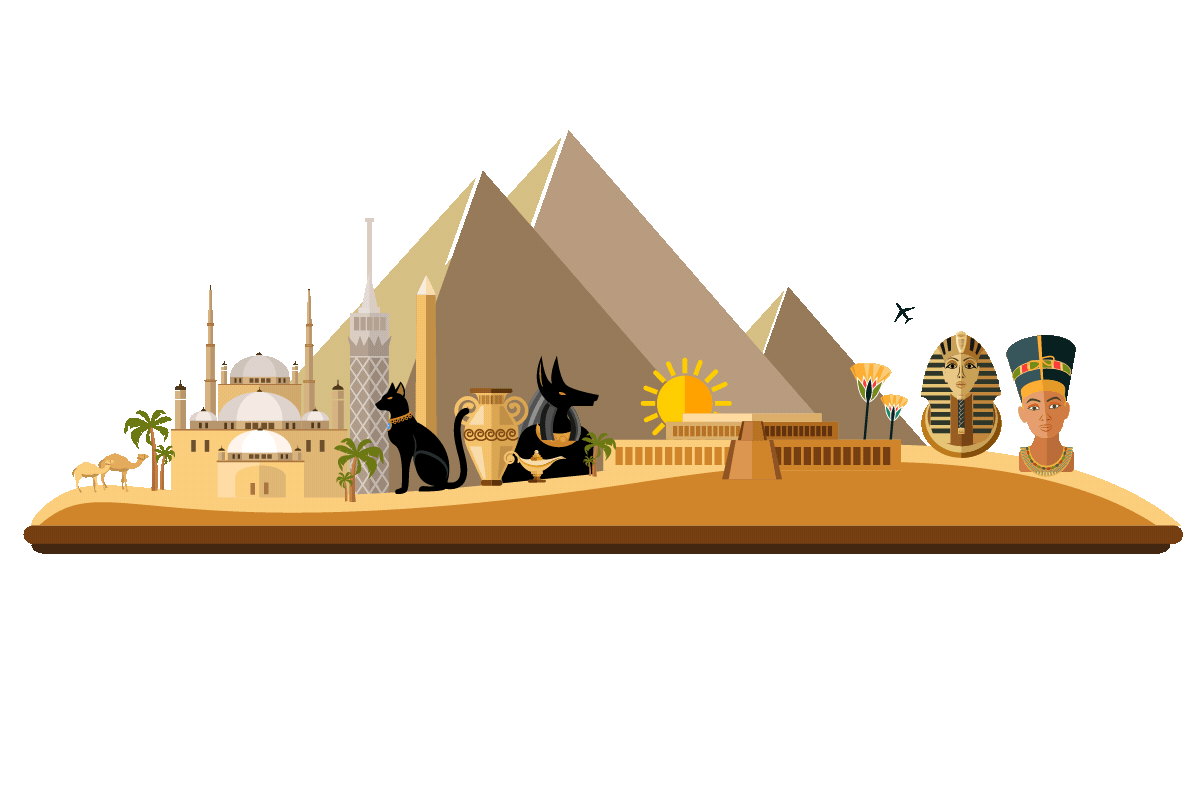
.DvizhAGb.gif)
Plan your next adventure now
Related Tours
Frequently Asked Questions
See more

There are no frequently asked questions :)
Related Blogs
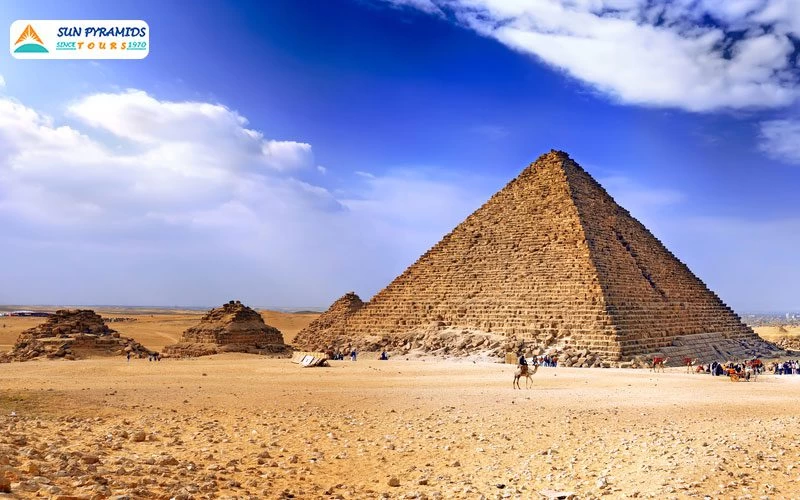
Plan A Trip to Egypt
+1 more
Ultimate Guide: How To Plan A Trip To Egypt
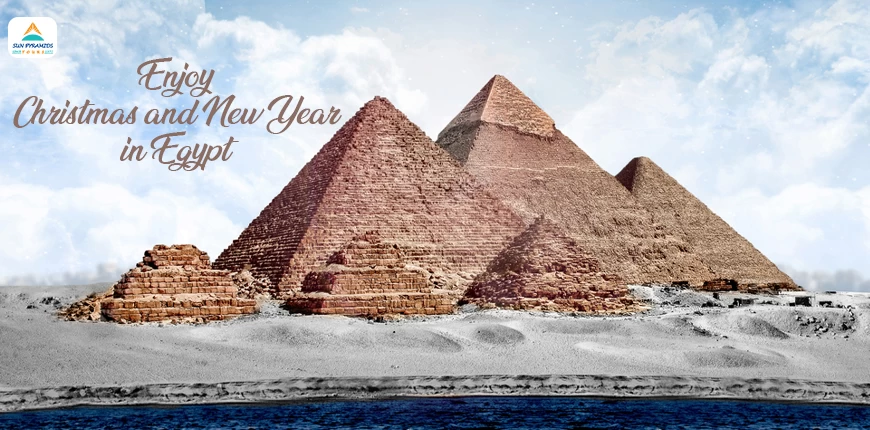
Christmas and New Year in Egypt
+1 more
Christmas and New Year in Egypt

Egypt Hidden Gems
+1 more
Egypt Hidden Gems
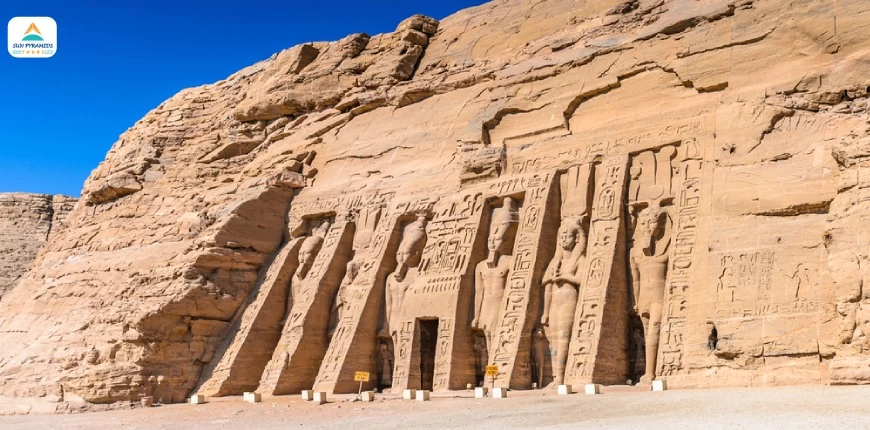
Abu Simbel Temple
+1 more
Abu Simbel Temple
Need help to Finding your Trip?
Offers
Make Trip
trips
Home

